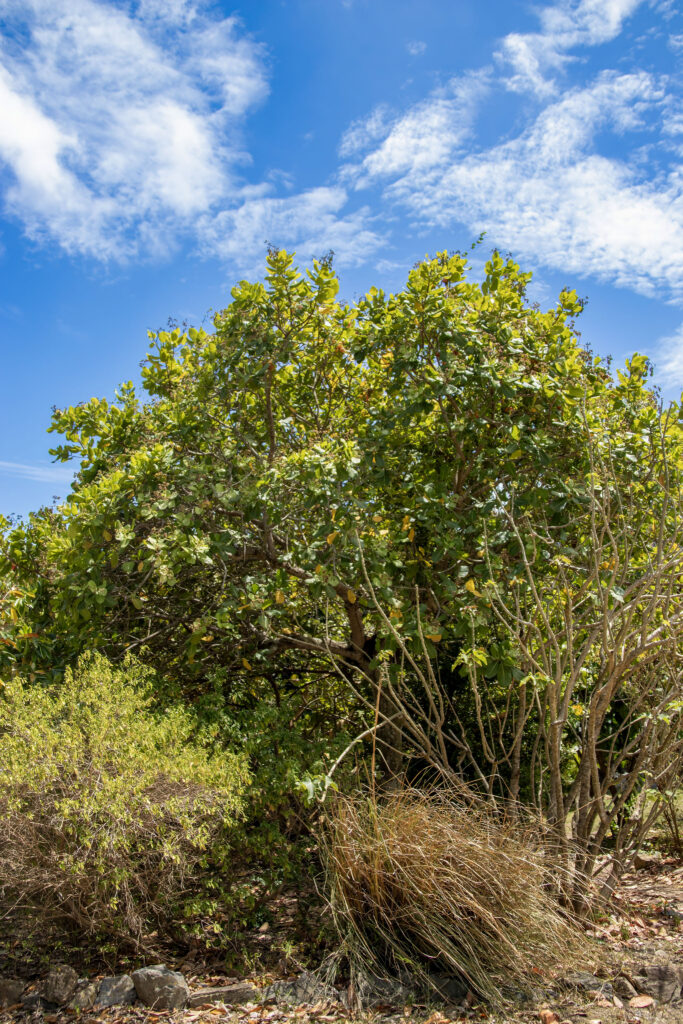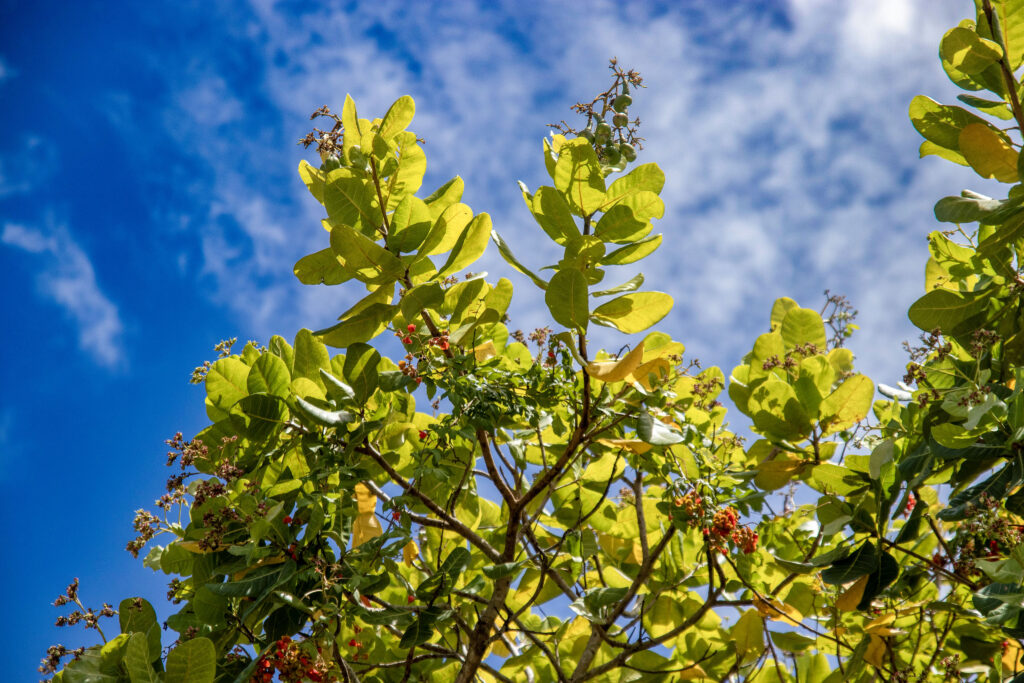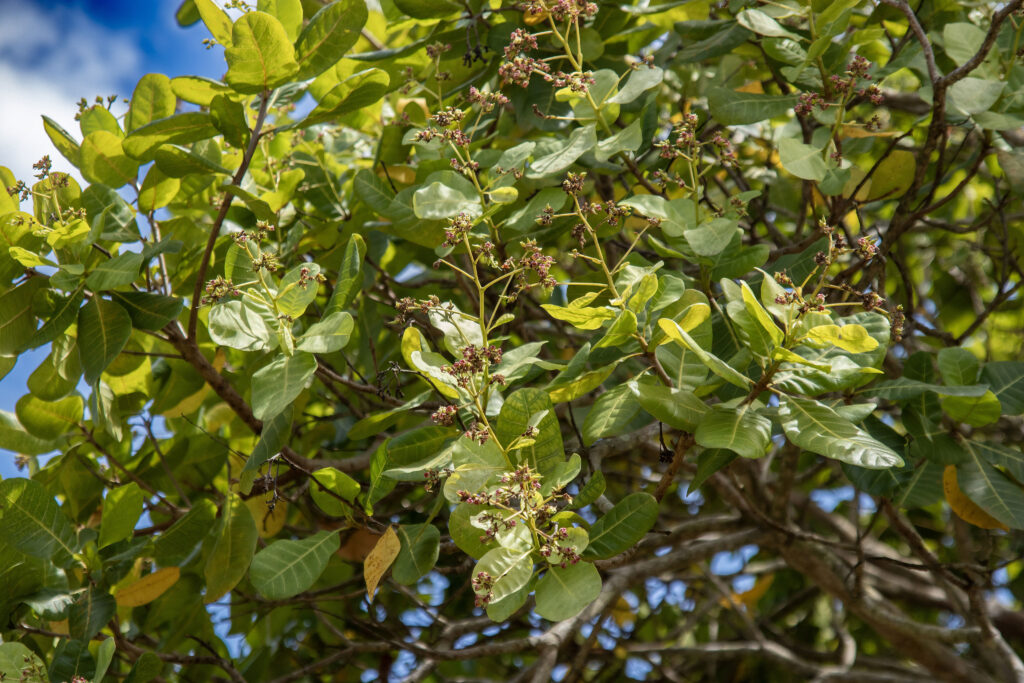Cashew tree
Scientific name: Anacardium occidentale
Common names: Cashew Tree, Cashew Nut Tree
The Cashew Tree, known scientifically as Anacardium occidentale, is a small, tropical evergreen tree in the Anacardiaceae family — the same family as mango, poison ivy, and sumac. Though native to northeastern Brazil, it has long since traveled the globe and found a place in Caribbean gardens and farms, including right here on St. Croix.
History on St. Croix
The exact date of introduction is unclear, but the cashew tree likely arrived in the Virgin Islands during the colonial period, brought either by the Portuguese or Danish planters and traders moving through Brazil and West Africa. Its drought resistance, edible fruit, and economic potential made it a practical addition to island plantings.
Today, you can occasionally find cashew trees in home gardens, older estates, or wild along dry roadsides, especially in drier areas of the island.
Botanical Description
- Height: 10–40 feet (3–12 meters)
- Leaves: Broad, leathery, and oval-shaped
- Flowers: Small, pale green or pinkish, and lightly fragrant
- Fruit: Technically a “false fruit” called the cashew apple (yellow, red, or orange) with a kidney-shaped cashew nut attached to the end
Unique Features
- The cashew apple is juicy and sweet-tart; eaten fresh, turned into juice, or fermented into liqueur in other countries.
- The cashew nut is encased in a hard shell that contains caustic oil — related to urushiol, the same irritant found in poison ivy.
- Processing cashews safely requires careful roasting or oil removal — which is why raw cashews are never truly “raw.”
Ecological Notes
- Cashew trees thrive in sandy, well-drained soils and tolerate drought well.
- They provide shade, food, and occasional shelter for birds and insects.
- Their fallen fruits and leaves return organic matter to the soil in otherwise arid settings.
Cultural and Culinary Use
While cashew nut production isn’t commercial on St. Croix, locals who have access to the trees sometimes experiment with the cashew apple, turning it into jam, juice, or local wine. The nut itself is often not processed due to the risks involved, but small-scale roasting can sometimes be seen.
Did You Know?
- The cashew fruit isn’t actually a “fruit” in botanical terms — the nut is the true fruit.
- In places like India and Brazil, cashew apples are considered a delicacy — not just the nuts!


